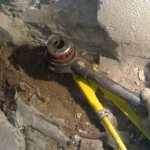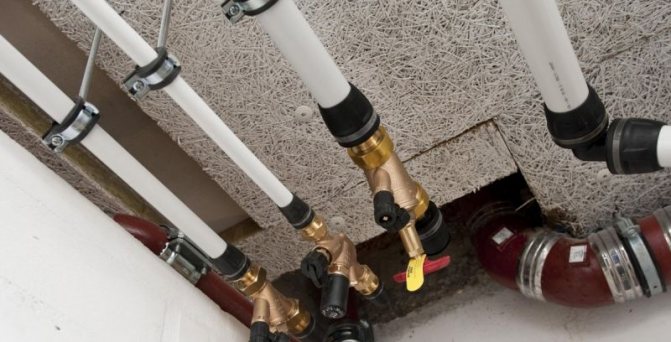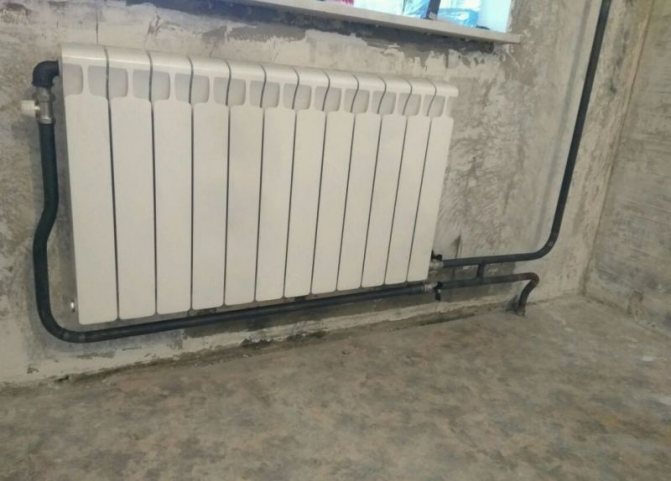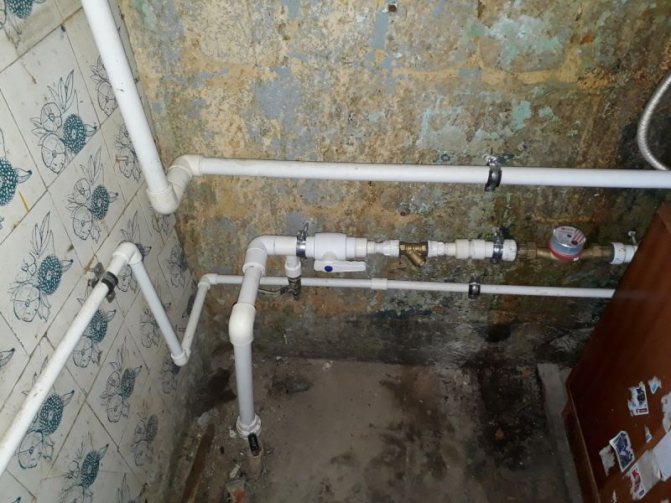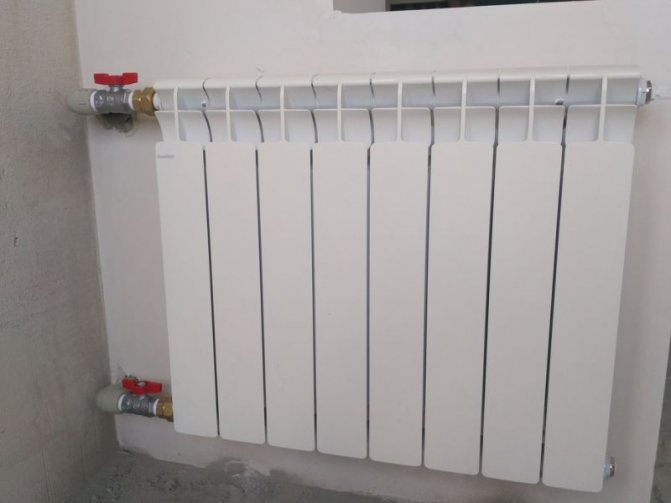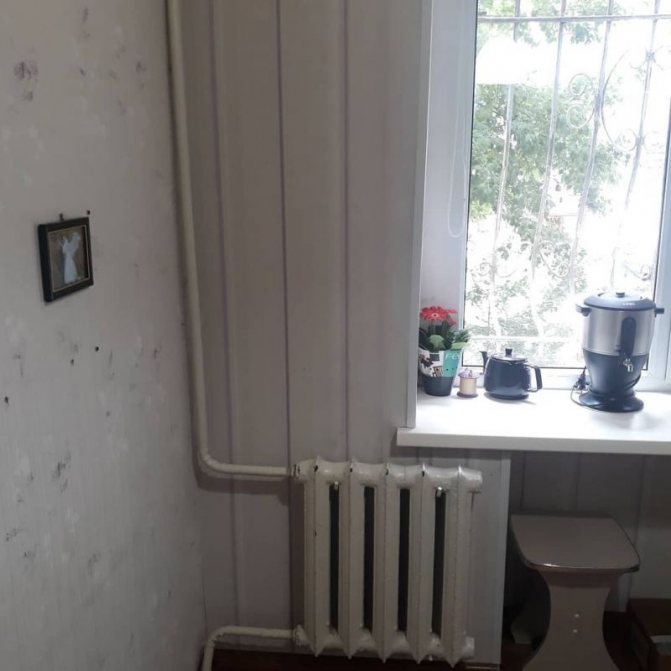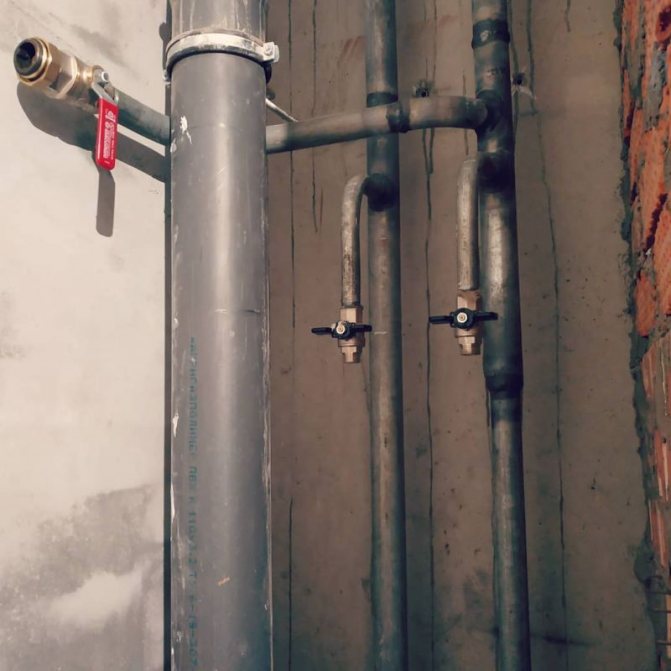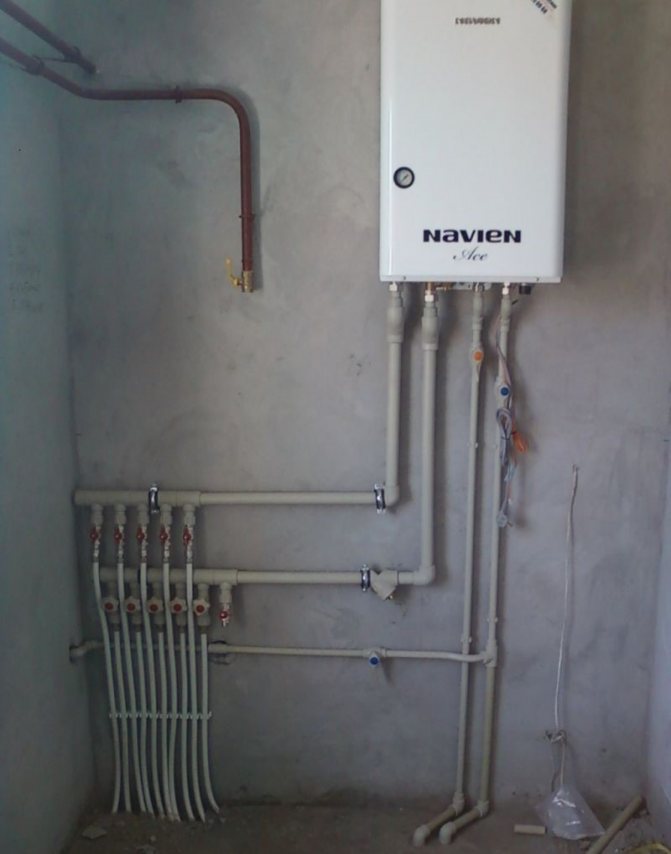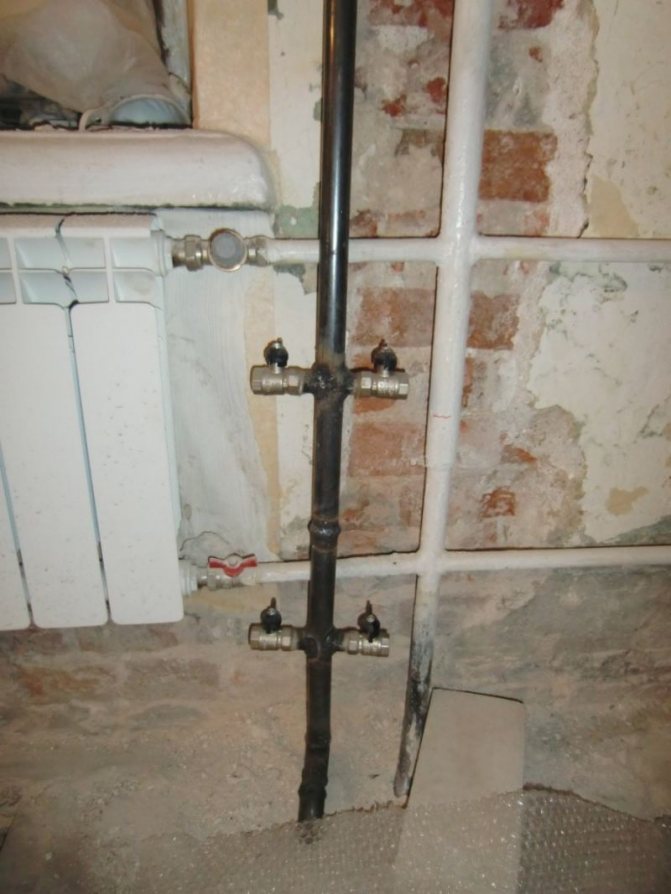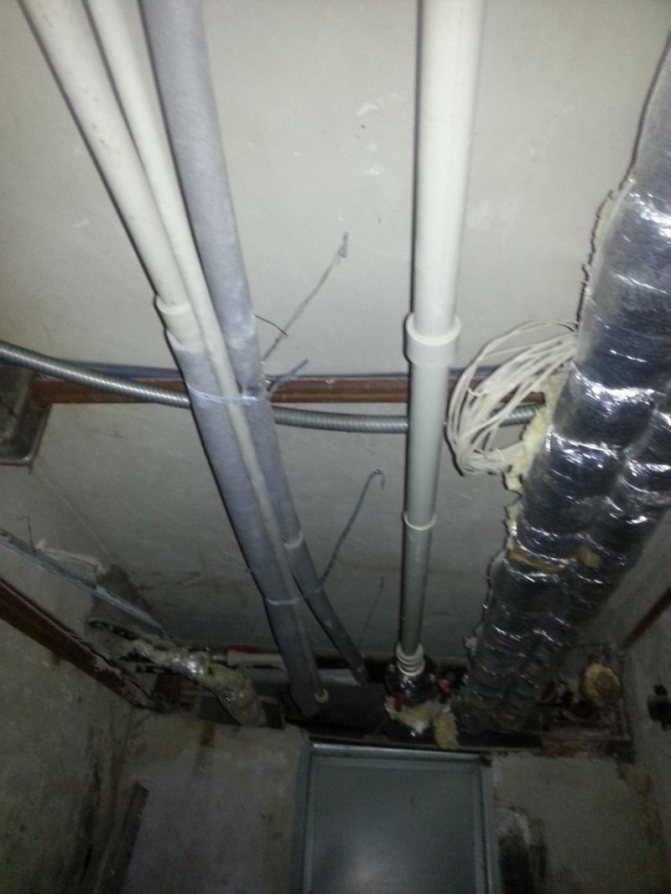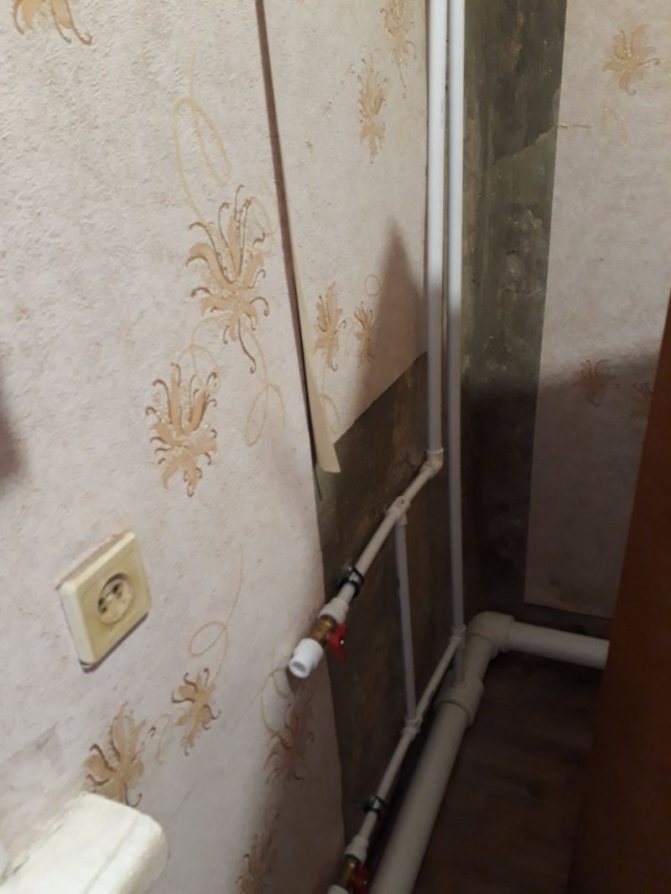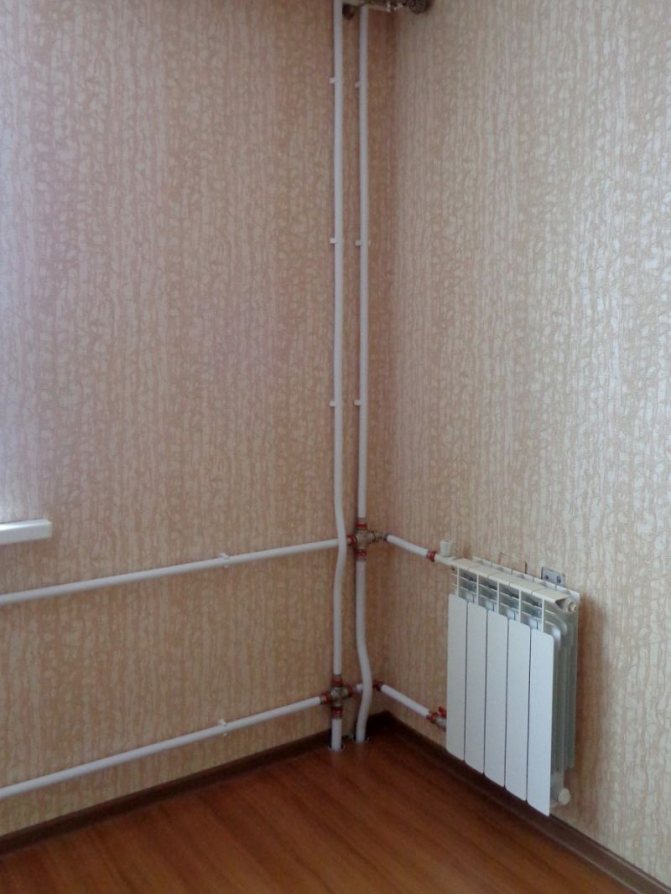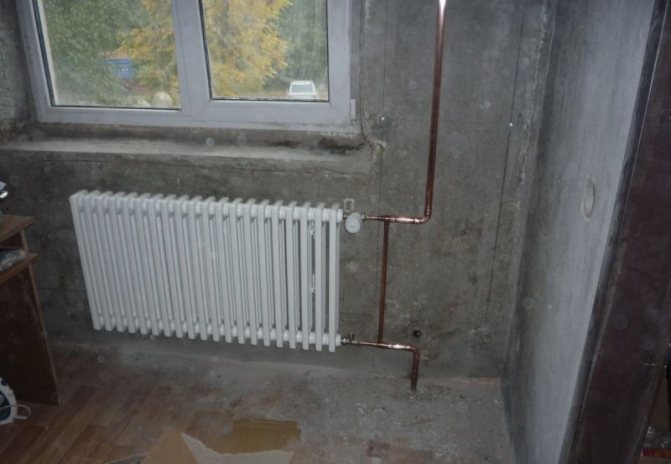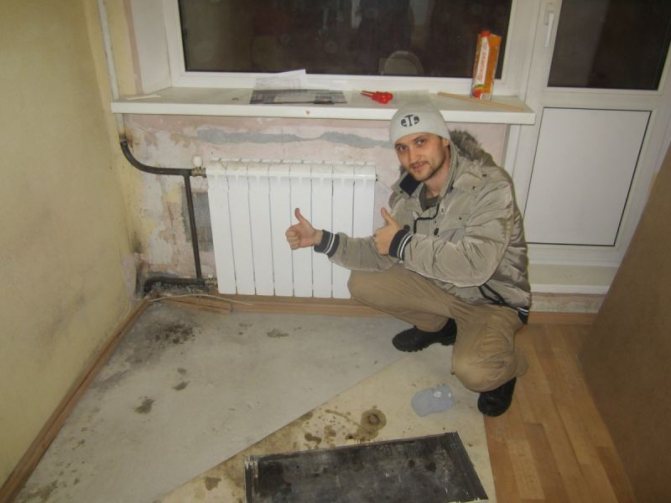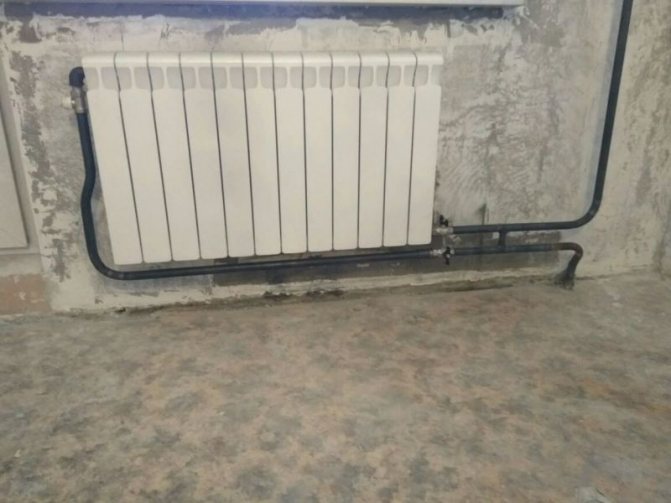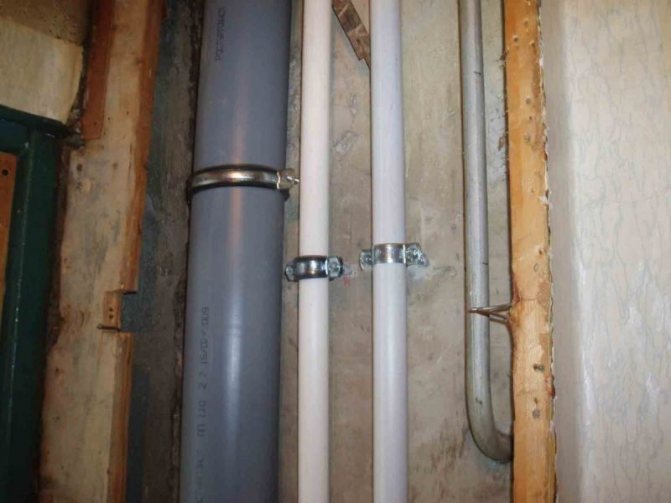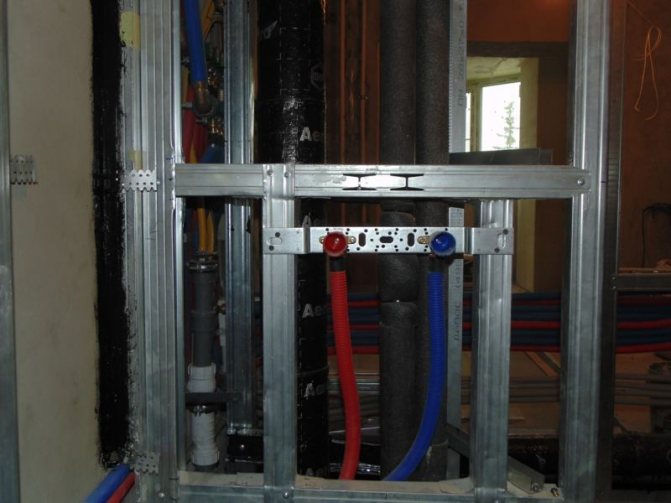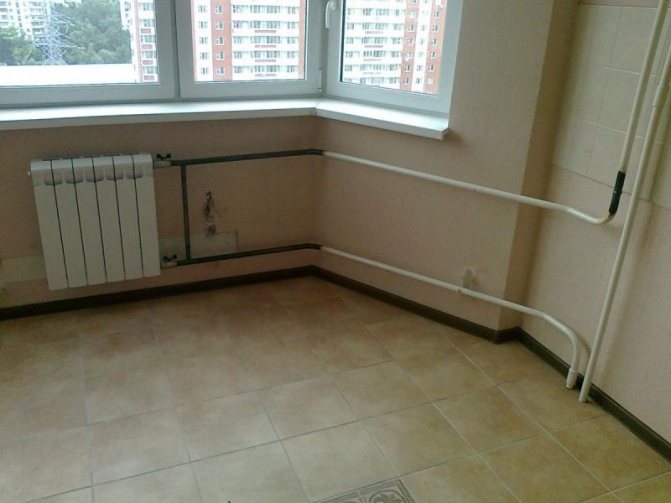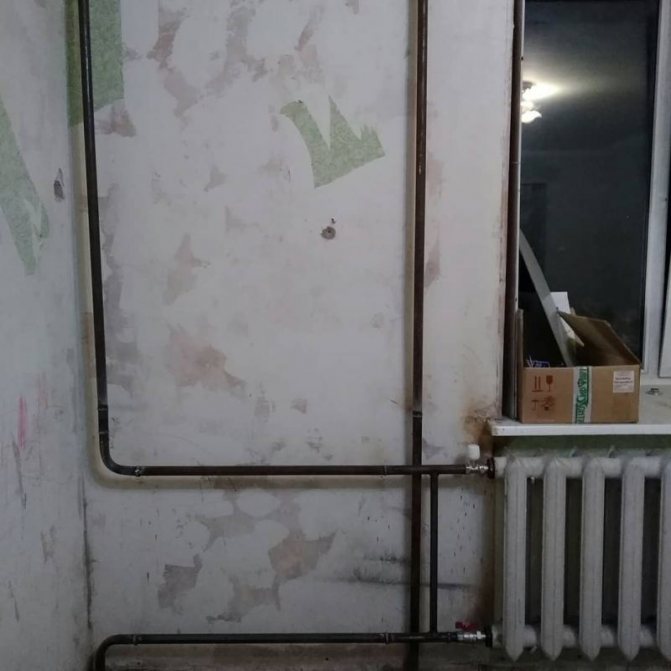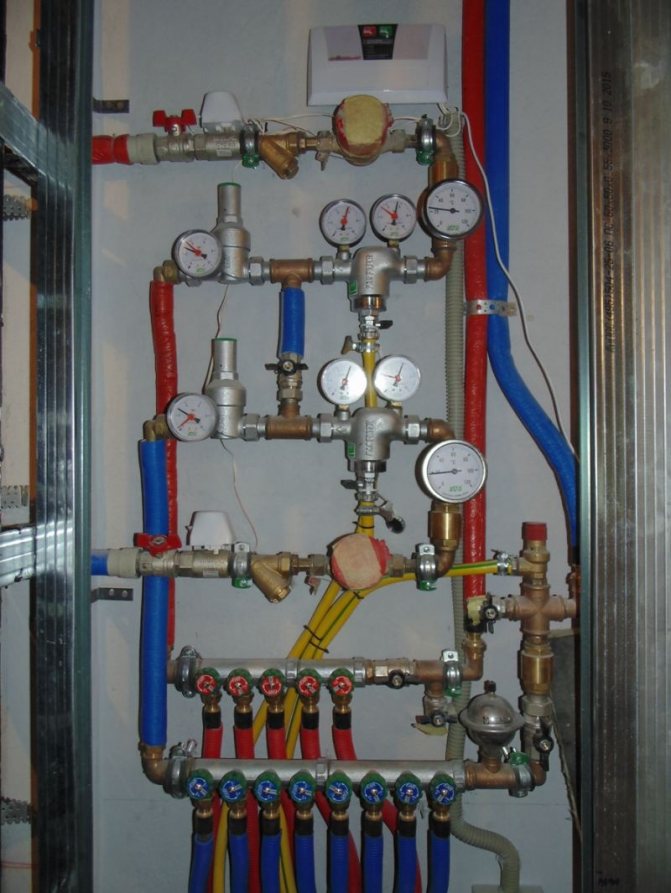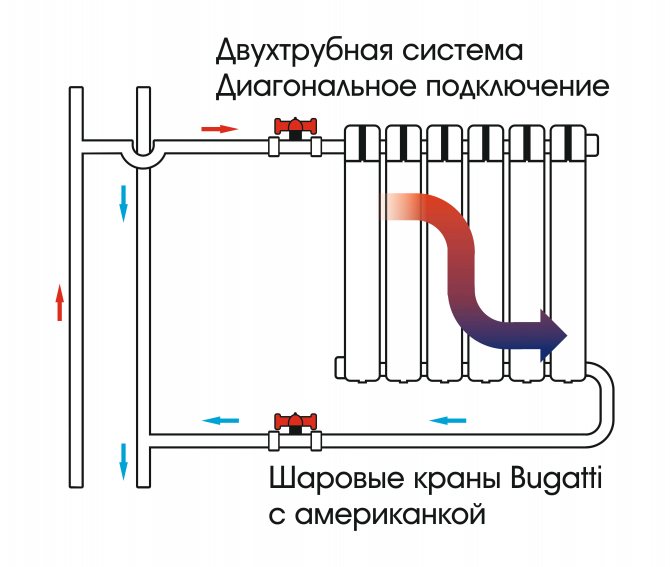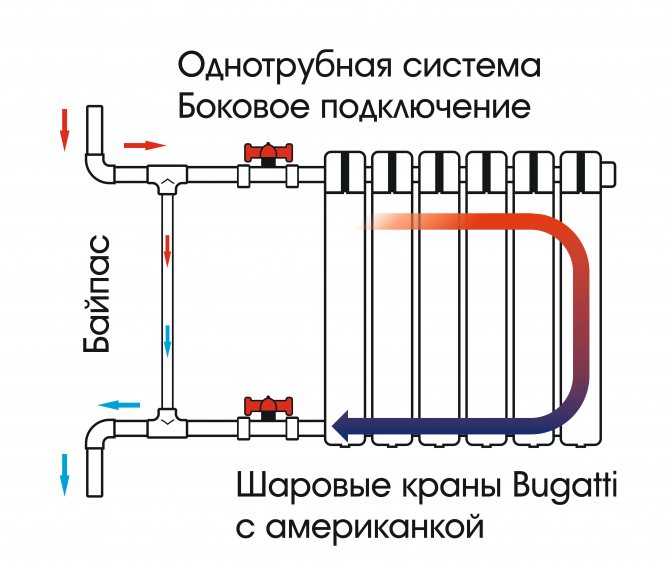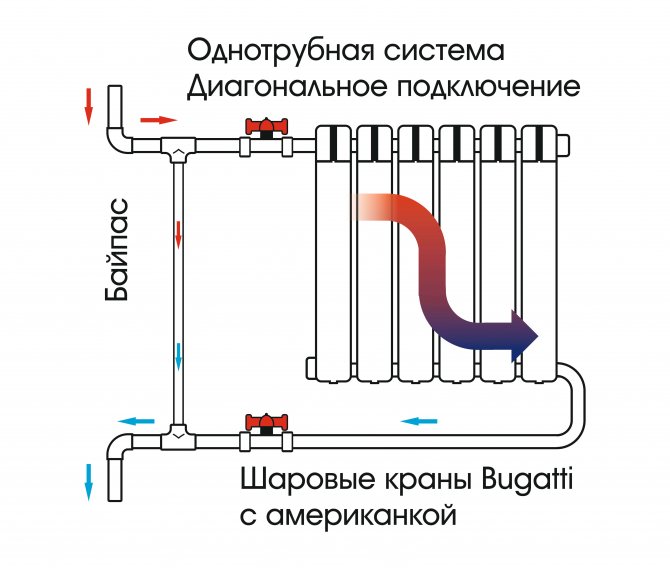Selection of material
If we consider the most popular material, it turns out that more often than reinforced polypropylene and metal-plastic pipes, nothing is used.
What is the reason for this choice?
- Replacing the heating riser in the apartment is done quickly, since there is no need to weld the pipes to one another.
- Pipes made from these materials are easy to bend, so they can be easily built into any corners and rooms.
- The components are relatively lightweight, so there is no problem of transportation even to the highest floors.
From all sides, the selected materials look almost perfect, but they do not react well to changes in pressure in the pipes. So, if it rises sharply from the standard 5 atmospheres to 10, then the pipes may not withstand, which will lead to a small deluge and call a locksmith in an emergency.
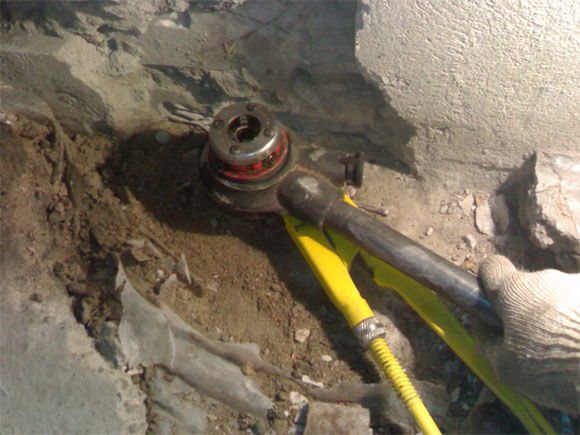
In addition, these materials do not withstand the coldest times of the year, when batteries have to be heated to the maximum. Plastic can begin to crack and leak, so galvanized pipes are the best option.
When is it necessary to replace the heating risers
There are several main reasons why it is necessary to replace the heating risers:
- The placement of heating devices is changing. For example, you decided to move a heating radiator, or install an additional one in a new place;
- Riser pipes worn out. As a result of corrosion processes, steel pipes gradually lose their performance characteristics, deteriorate, deposits and rust are formed. You can expect the planned replacement of risers by housing and communal services workers, or you can do it yourself by contacting our specialists.
What you need to start working with galvanized materials
The first step is to purchase galvanized pipes DU20 in the required quantity. In addition, a welding machine will be an indispensable element of all work, without which it is impossible to repair risers in an apartment building.
Gas welding can make the job much easier, especially if the installation conditions are difficult. If you have a welding machine, it is worth purchasing long and short threads. Shut-off valves and a radiator will be connected to them.
In addition, you will need:
- three locknuts for the radiator;
- three squeegees, which will go one by one to the jumper and liners;
- two cast iron or brass tees;
- two couplings;
- three valves for pipe DU20.
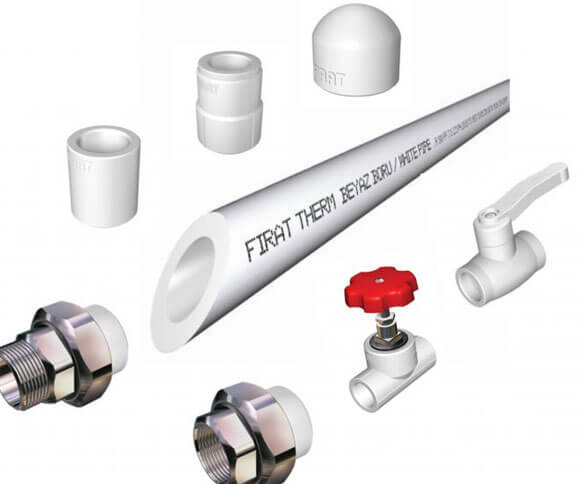

The latter are needed to control the heat in the room, since they can block or limit the flow of water into the battery. In addition, only ball valves should be purchased as they are the most convenient to use.
Beginning of work
First of all, the question arises: how to turn off the water flow in the heating riser?
The answer to the question will be the design of bottling water in a residential building, which can be:
- top;
- bottom.
In the first case, you will need to turn off the water, both in the attic and in the basement. When pouring from the bottom, the risers are connected in pairs, so you have to find a neighboring riser with the one you need. To do this, you will have to go to the apartment from above and see the location of the lintel (read: "Installation of heating pipes in the apartment - the main types of material").


After cutting off the water, you will need to remove the plugs and drain the water. In addition, during the heating season, this operation cannot be performed if it is impossible to enter the apartment on the floor above, since it will be impossible to resume the heating cycle. The reason is simple: air will accumulate in the radiator, which cannot be released without access to the battery.
Range of work carried out to replace risers
The cost of replacing water supply risers in an apartment includes the departure of the master, the price of a new pipe and the services of its installation. This is also influenced by the shape of the pipeline. For example, installing a straight pipe without any bends will be cheaper than installing a pipe that needs to be bent in the future (to bypass a radiator or other stationary structure). Our employees will perform the following procedures.
- Replacement. Inexpensive replacement of cold water risers is required if the old pipes are fairly rusted and begin to leak. This is also necessary after severe mechanical damage to pipelines, in which they are deformed or have lost their tightness.
- Transfer. The transfer of hot water risers in the house is carried out in order to place pipelines at a safe distance from objects and devices, next to which, according to safety regulations, the installation of metal water pipelines is not allowed. It also allows you to free up space for the installation of kitchen furniture and sanitary ware.
In the process of performing work, employees use high-quality welding equipment, which ensures the strength and reliability of welded joints. The metal pipelines that replace the old ones are treated with a special zinc coating. It reliably protects the metal surface from moisture and chemicals, thereby increasing the service life of products. The company issues a 5-year warranty for the entire range of work performed.
Removing the old riser
The easiest way will be to remove the old riser by cutting their liner with a turbine. After that, unscrew the locknuts and unscrew the rest of the liner from the radiator.
In order to determine the place of cutting the riser, several facts should be taken into account:
- with good relations with neighbors on the floors, you can come to their apartments and remove part of the pipe in the concrete gap, since usually all leaks occur precisely in this area;
- for the convenience of work, it is better to cut the pipe above the floor and below the ceiling, as this will leave more room for maneuver. It also makes it easier to change the tubes later if necessary.
Who should change the batteries in the apartment: the owner or the management company?
Who should change pipes in a privatized or municipal apartment? Most owners of privatized apartments do not even think about the fact that not the whole apartment is their property. For instance, according to the provisions of the Housing Code of the Russian Federation, walls, roofs and transit communications (including batteries) are common property. And this means that the financial responsibility for their condition falls on the shoulders of the management company serving the house.
So homeowners are not at all obliged to pay for the necessary replacement of radiators. However, there is a slight subtlety here: the radiator ceases to be considered a common property if it can be separated from the riser using a locking device - a jumper. But if there is no jumper, then the tenant can count on a free replacement of the heating batteries in the apartment.
Important! Before you go to the store for a new battery, check if there is a disconnecting device on the branch from the riser of the indoor heating system - a tap. If it is not there, feel free to contact the management company.
In addition, due to the ownership of the common house property to all owners, the latter can collectively decide to replace the batteries for an additional fee, which should be indicated in the corresponding clause of the management contract.
Does the tenant have to pay for the replacement radiators?
As for citizens who rent housing from the state, the same rule applies to them, or rather, the same "Rules for the maintenance of common property in an apartment building" approved by the Government of the Russian Federation of August 13, 2006 No.No. 491, paragraph 6.
It lists the items of common house property: an in-house heating system, which includes risers, heating elements and stop valves that regulate them, as well as other equipment on these networks.
This legal act classifies the heating system as a common property, the repair and replacement of which, according to the same law, is paid for by the management company from the funds accrued under the article "Routine repair and maintenance of the house", with the exception of work performed as part of the overhaul of the heating system of the house as a whole.
Therefore, if the heating radiator does not have a shut-off valve, then tenants do not have to pay for the purchase of the radiator and its replacement.
If there is a valve, the replacement of the heating batteries in the apartment will be part of the current repair, and, according to clause 4 of the social employment contract, it is carried out at the expense of the employer. In particular, the contract states that the tenant is obliged to monitor the health and safety of the equipment inside the apartment and to make current repairs of the premises "at his own expense."
The list of repair works also includes "repair of in-house engineering equipment", including the heat supply system.
Correct thread setting
Pipe threading may seem like a routine task to an experienced technician, but a novice locksmith may be unfamiliar with the process.
So what you need to pay close attention to
- With the help of a file or impeller, it is necessary to chamfer, after which an entry is made for the die.
- The long-sided die with the holder is pushed onto the tube. This operation is necessary for the perpendicular entry of the die onto the pipe.
- Short threads are applied to the riser, not exceeding five threads. The thread is applied strictly clockwise.
- When the die enters the edge of the tube, it is worth pressing the holder as powerfully as possible with all your might.
- After cutting the first thread, you need to hold the riser with a gas wrench. The maximum force is applied so that it is possible to compensate for the rotational moment of the die, since otherwise it will be possible to strip the threads of the riser on the floor above or below.
- If a convector is mounted for welding, then you will not need to hold the structure, since it is impossible to pull out such a riser.
- It is necessary to cut a long thread on the piping to the radiator and on the squeegee in the jumper.
- During the cutting process, the pipe section must be fixed with a vice in order not to destroy the structure of the already carved thread.
But how to do it?
But leaving aside for the time being the questions of who and what should do, for what to be responsible, we will consider, purely technically, how, for example, old pipes can be replaced with plastic ones. This will remove worn-out and clogged pipes by installing new ones, and thus help solve the problem of how to increase the heat transfer of the heating pipe - by passing a larger amount of coolant.
In this case, what your neighbors have will be critical for the performance of the work. If the neighbors from above have already changed the metal pipe of the riser to a polypropylene one, then you need to install the same one.
It is best if you can agree with them about the possibility of connecting to their junction. In this case, you are dismantling the heating in the apartment, i.e. cut out all the old pipes, cut out an adapter from plastic to metal from a neighbor, determine in place the desired length of pipes that need to be laid. Then a scrap metal is pulled out of the floor, a propylene pipe is inserted instead and soldered through a propylene sleeve to the existing one of the neighbors.
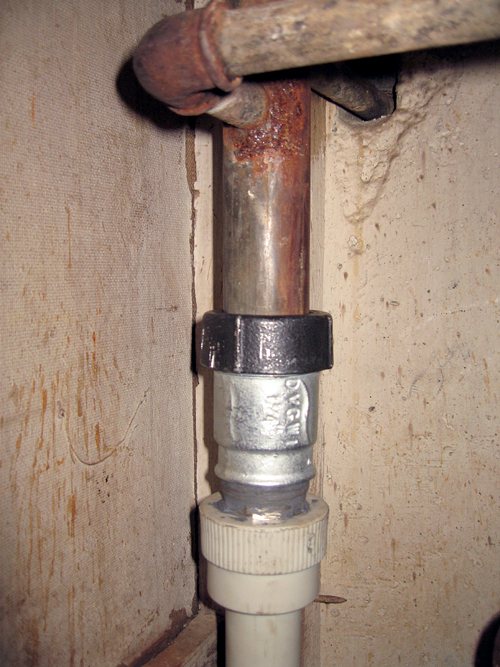

Connection of metal and polypropylene pipes using a special coupling
In those cases, if the neighbors have metal left, and they do not allow them to make a joint in order to pass the overlap, then you will have to cut your pipe under the ceiling, and cut a thread on its remnants. An adapter sleeve for polypropylene is placed on it, and the corresponding pipe is already connected to it.
If you want the replacement of heating in the apartment to be complete, i.e. if you are planning to replace radiators, then you need to start work with them.
There are quite a few of them, and of various types, but regardless of this, there are general rules, the implementation of which will allow you to get a good result:
Replacing heating batteries with gas welding
- all radiators in the apartment must be located in the same way, at the same level;
- the battery must be placed strictly vertically;
- its top should be five cm below the windowsill and six cm above the floor;
- when attaching a radiator, one mounting bracket must fall on one square meter of its surface;
- the face of the battery should protrude beyond the edge of the window sill.
Correct installation of the heating radiator
Starting the heating riser
Regardless of how many heating risers are in the apartment, the operation to start them is always the same:
- first, the design is tested under pressure;
- then water is started in the batteries and the riser is checked for leaks (in more detail: "Starting heating - we start the system according to the rules").
It is worth finding an assistant to perform the pressure test of the structure. In addition, you can take a photo of all the joints in advance, since the slightest changes will be difficult to notice at first glance, but in comparison with the initial design, it will not be difficult to find flaws (
Rules for connecting radiators to the riser
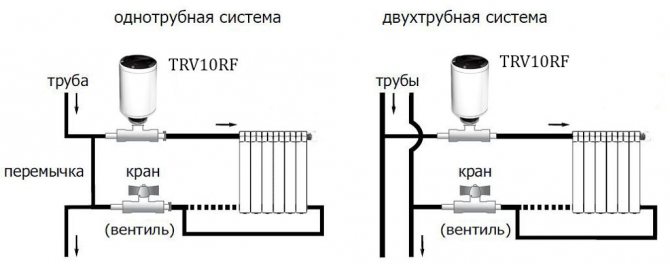

Ways to connect a radiator to a riser
Replacing a riser is most often associated with a general modernization of the heating system. At the same time, not only new pipes are installed, but also radiators and batteries. It is important to choose the right scheme for their connection with the heat supply system.
First you need to complete the radiator so that it can effectively perform its functions. Its piping should include the following components:
- Shut-off valves... With its help, you can completely limit the flow of coolant into the battery for its repair or replacement;
- Thermostat... It is necessary to reduce the heat flux in order to lower the surface temperature;
- Mayevsky crane... A device for removing air plugs.
In addition to the possible thermal insulation of the heating risers, the wiring diagram of the supply lines is taken into account. For a one-pipe system, a bypass is mandatory. This is a piece of pipe that connects the inlet and outlet pipes of the radiator. The diameter of the bypass must be one size smaller than that of the heating riser. In this case, the formation of a low pressure zone in the system can be avoided.
Experts recommend using the same pipes to connect the drain to the battery. This is necessary to normalize the operating parameters of the entire system, besides, it will greatly facilitate the laboriousness of installation. As an additional measure, pressure and temperature sensors can be installed. In this way, the quality of the heating service can be monitored.
To prevent premature battery clogging, it is recommended to install a strainer. It is mounted on the supply pipe in front of the thermostat.
What if the air cannot be displaced?
Unfortunately, a non-standard situation may occur and usually working methods will be powerless. This may be due to the absence of neighbors from above or the unusual design of the house, but you should always be prepared for the fact that the resumption of heat supply to the apartment is not always possible immediately.
Experienced craftsmen use the distillation of the riser for the discharge, since in most cases this allows the circulation to be restored.Manipulations are carried out either over plugs or over valves.
To do this, on one riser, it is necessary to open the valve, and on the second riser - a vent. In this case, the air will leave the battery along with the water. If there is no result, it is worth performing the same actions, but in the opposite direction.
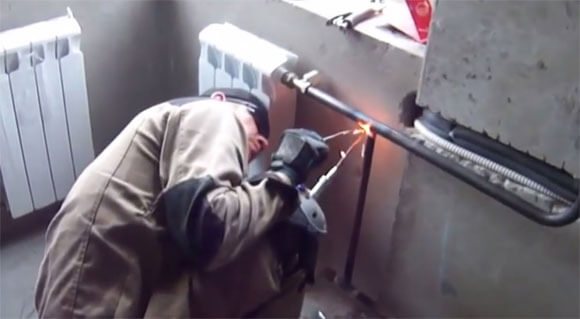

It is worth noting that this technique is especially effective if aluminum or bimetallic radiators are used in the house, since they do not trap air, unlike their cast-iron counterparts, which create traffic jams, so there can be much more problems with them.
Replacing a riser in a house is not an easy task, but it is quite feasible even without special knowledge. It will be very important to use high-quality materials, since otherwise even the hand of the master will not be able to protect the heating system from leaks and heat losses (about
When is the best time to replace batteries
So, let's start, first we will consider the simplest case when the batteries need to be replaced during the renovation of an apartment. It is best to replace batteries at the stage of finishing the rough finish, that is, when the walls are plastered and the screed is poured. It often happens that an old heating device (convector or cast-iron radiator) interferes with plastering the wall behind it, in which case it is necessary to perform plastering wherever possible around the old radiator, so that the radiator installer understands at what level the wall goes and installs the radiator as on the required distance from the wall and parallel to it. Plaster the space behind the radiator by removing the new radiator after installation.
You should also understand the technological process that first the radiator is installed on the brackets, blanks of new bends are attached to it on the union nut of the ball valve, and only then the bends are welded to the riser. And not vice versa. The reason is the need for precise alignment of the radiator outlets and collectors. An example of a job I was reworking that did not follow the required workflow.
